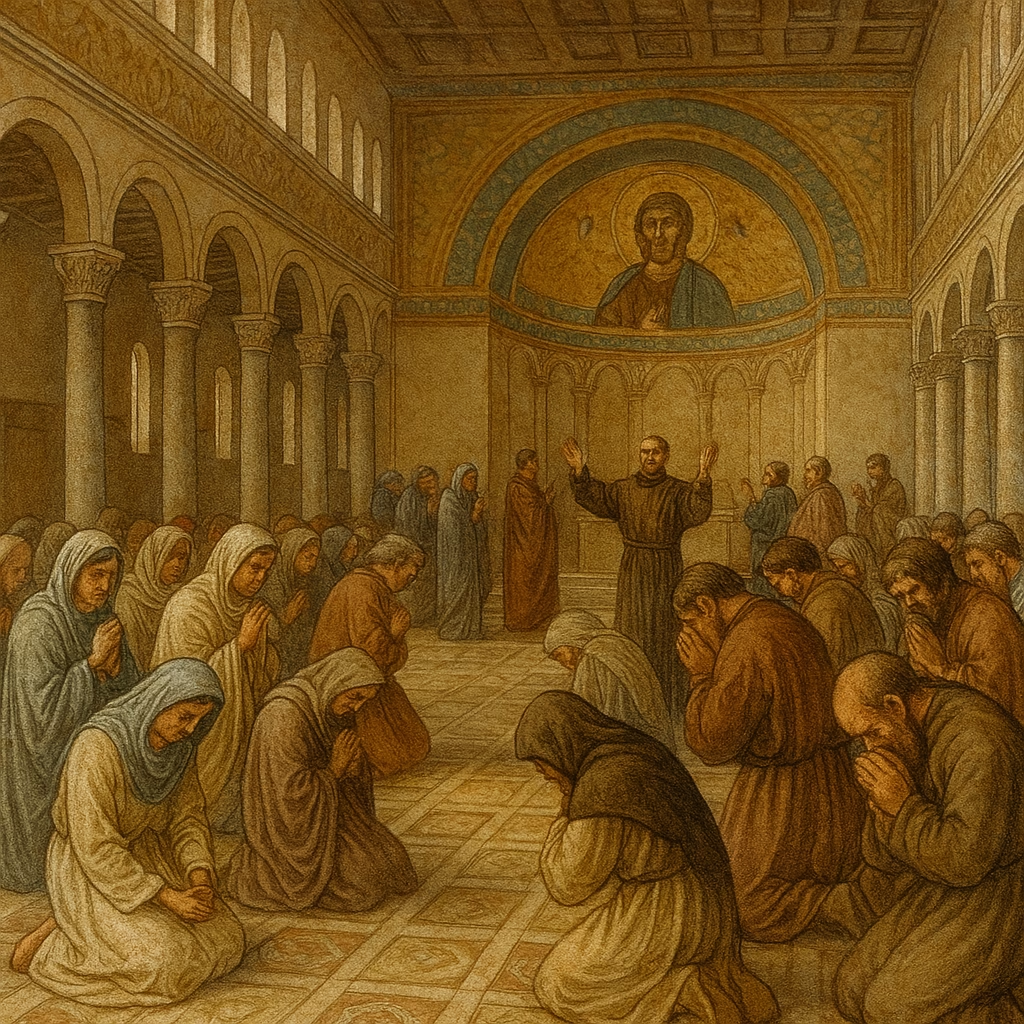According to The Oxford History of Christian Worship, “The basic lines of the Roman Lent…suggest the formation of this enormously complex system sometime in the late fifth century.” It continues,
The forty-day Lent most probably began at Rome as a continuous preparation for Easter sometime in the late fourth century. Prior to that we can discern a three-week preparatory period for Easter baptism, characterized by the old title given to the fifth Sunday (Sunday in Medianna) and by the reading of John’s Gospel during those weeks. At some point before the late fifth century, four more days were added to Lent to ensure forty days of fasting during the period. Thus what originally began on the first Sunday of Lent now began on a Wednesday (Ash Wednesday).
Each day in the Lenten scheme was celebrated at a different church in the city of Rome. The larger churches were employed for Sundays and other significant celebrations, such as the Ember Days (special fast days in the first week) or days that related to baptismal preparation (Wednesday in the fourth week at Saint Paul’s Basilica, a date for the enrollment of candidates.)
In an excellent article “The Early History of Lent” Nicholas V. Russo offers an overview of many historical options. His conclusion is:
The current state of research points to three possible conclusions. Because the evidence is slim and admitting of any number of plausible interpretations, one position has been to view Lent as a sui generis phenomenon—completely new and unique—that simply appears after the Council of Nicea. In this view, any attempt to hazard connections or lines of evolution from pre-Nicene fasting practices is too speculative to be of any value. Another, rather opposite, position has been to accept as historical the alleged Egyptian post-Theophany fast, to identify it as the dominant antecedent to Lent, and that Lent’s rapid dissemination throughout the Christian world is best explained in relation to the program of liturgical and theological alignment begun at Nicaea. A final position, a sort of via media or middle road, acknowledges the incomplete and sometimes-contradictory nature of the evidence, but asserts nonetheless that Lent develops as an amalgamation of several early fasting customs and typologies of which the post-Theophany fast (if it existed) may have been but one of many. As with most issues in the study of the early history of the liturgy, certainty is elusive and we must be satisfied with possibilities.
